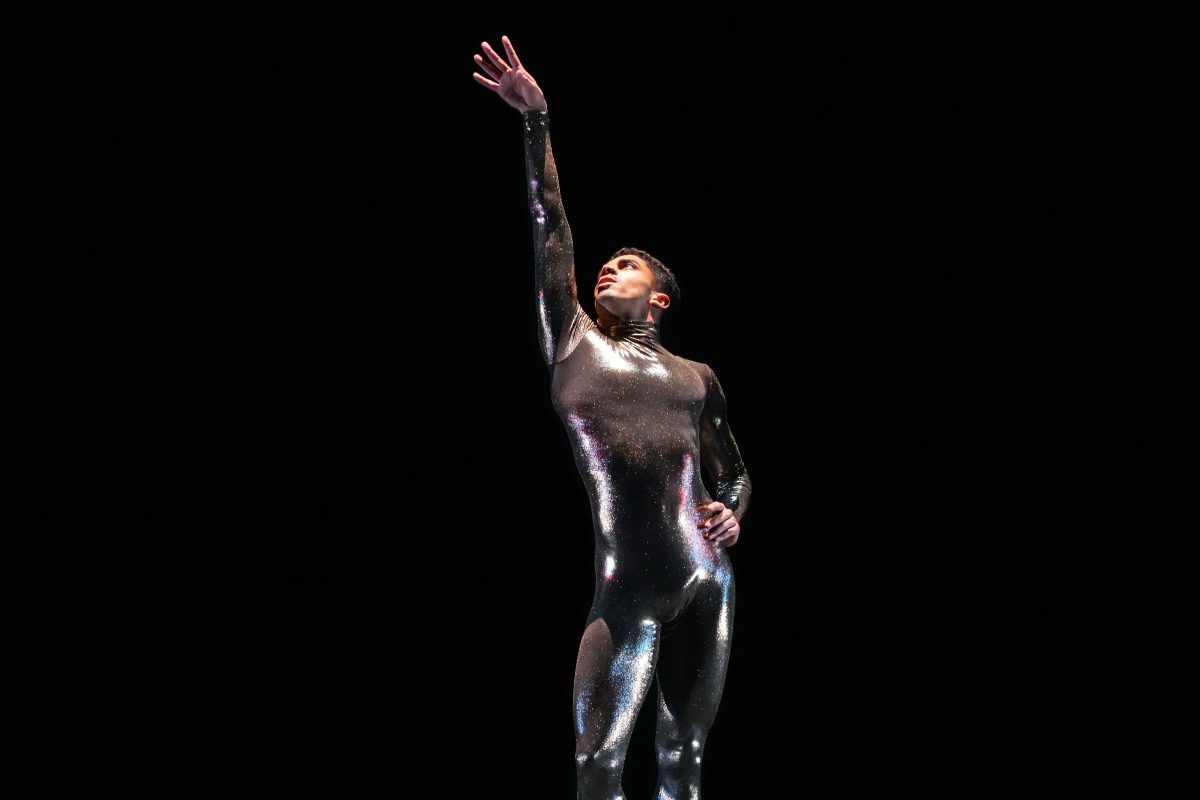Hubbard Street Dance Chicago, a world-renowned and boundary-pushing contemporary dance company that has toured across 44 states and 19 countries, performed on Thursday at Northrop Auditorium as part of the 2023-24 Northrop Dance Series.
The performance, which was just over two hours including intermissions, featured 14 dancers and four dances, each by a different choreographer.
The Hubbard Street production did not have one singular overarching theme, as the choreographers were brought in and given the artistic freedom to create the dance they wanted with little restriction. Because of this, each of the four dances performed covered a variety of topics, from seeking connection to virtuosity to community, said Kristen Brogdon, Northrop’s director of artistic and community programs.
The last time Hubbard Street came to the University of Minnesota was in 2018, according to Brogdon. She said she decided to select the dance company because many of the current performers are relatively new.
Brogdon added the newest artistic director of Hubbard Street, Linda-Denise Fisher-Harrell, was a reason to include the dance company in this year’s Northrop season because of her new approach to the organization.
“One of the things I admire about [Fisher-Harrell] is that she can keep looking forward to the future with an appreciation for the past,” Brogdon said.
Before Fisher-Harrell stepped into her current role in 2021, she danced for Hubbard Street when it was more focused on Broadway-style choreography, according to Brogdon. Despite the company shifting away from that genre, Fisher-Harrell has found ways to incorporate Hubbard Street’s history with entertainment-based dance into their current repertoire.
“[Fisher-Harrell] has figured out ways to really kind of weave a deep artistry together with that sense of entertainment so that the audience is going to see themselves on stage,” Brogdon said. “They’re going to find something that they can love and appreciate in these very broadly varied programs that they do.”
One of the choreographers, Rena Butler, is a critically acclaimed artist who has worked in dance companies across the country. Her piece shown at Northrop was titled “Aguas Que Van, Quieren Volver,” a trio dance inspired by part two of a novel called “The Book of Laughter and Forgetting” by Czech and French author Milan Kundera.
The part of the book Butler drew inspiration from, entitled “Mama,” shows a mother, a son and his wife navigating their relationships with each other and the miscommunication they face throughout. However, while the music in the piece is “groovy and sensual,” Butler wanted there to be hidden qualities of the dance that alluded to assault, which ties back to her own life.
“There’s such a hidden vernacular of possible assaults or hidden deviousness to [the dance] that you can see if you’re looking quite clearly,” Butler said. “Are [the dancers] three people? Are they two people with static in between or are they all the same person trying to put themselves back together again? I wanted to abstract it in that way. Depending on the experience you’ve had, you can choose your own adventure.”
Eliana Thompto, a freshman studying psychology and dance and an attendee of the performance, said Butler’s trio “was probably everyone’s favorite” because of the way the dancers were able to “work around each other” yet create a cohesive story.
According to Thompto, people of all ages attended the event. She credits Hubbard Street’s performance with bringing in many campus and surrounding community members to engage with the dance art form.
“I honestly kind of forgot that we were in a bigger community with families and stuff, and so just perspective-wise, I thought that that was really nice,” Thompto said.
Not only do dance companies like Hubbard Street create a sense of community, but they also create a powerful mode of communication that anyone can understand and feel, according to Brogdon.
“With Hubbard Street in particular, really looking for those moments of joy, moments of connection, that feeling of ensemble,” Brogdon said. “I wanted it to spread from the stage out into the audience and to have people leave Northrop with that feeling that they were part of something bigger than themselves.”








